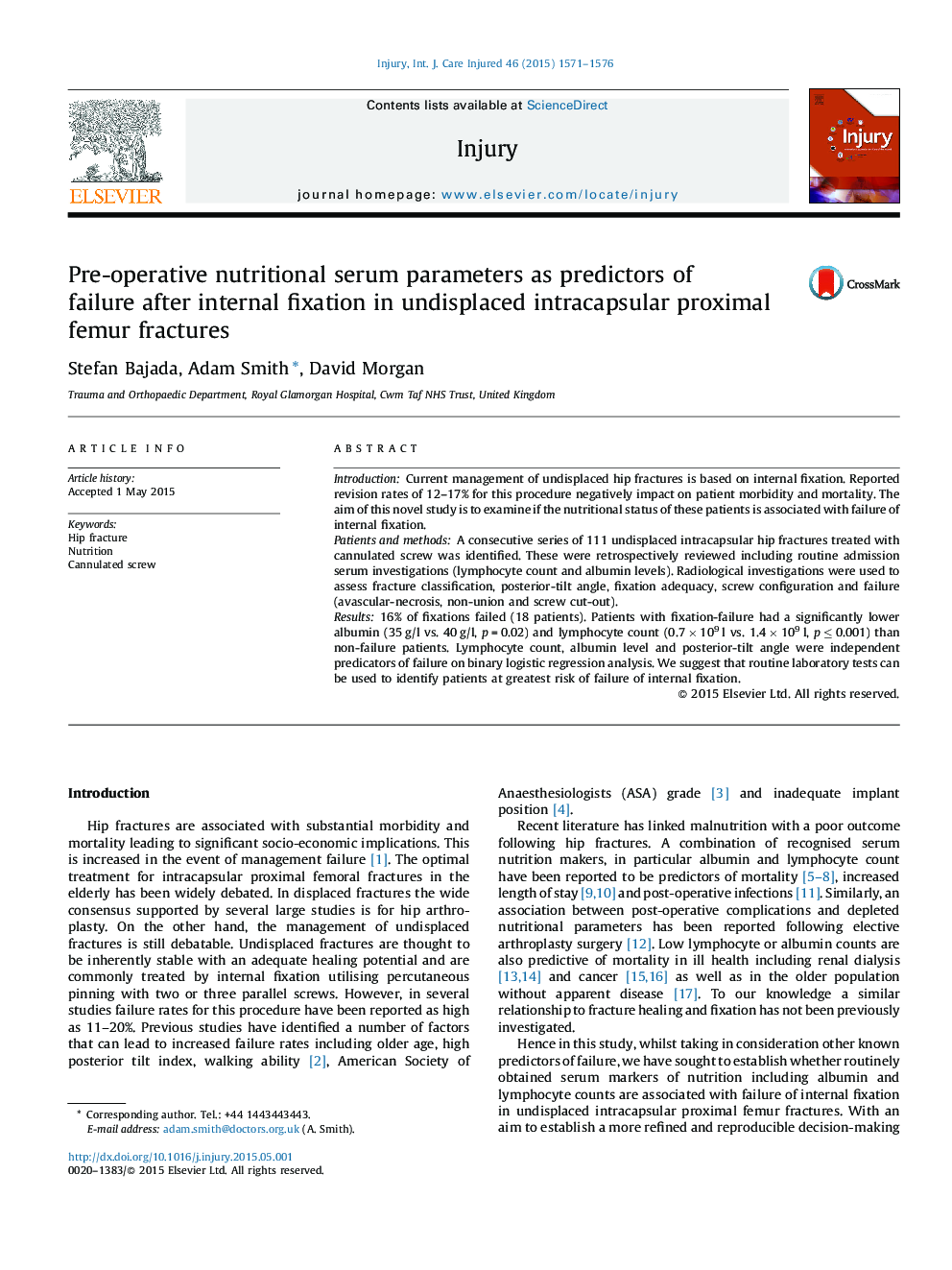| Article ID | Journal | Published Year | Pages | File Type |
|---|---|---|---|---|
| 3238900 | Injury | 2015 | 6 Pages |
IntroductionCurrent management of undisplaced hip fractures is based on internal fixation. Reported revision rates of 12–17% for this procedure negatively impact on patient morbidity and mortality. The aim of this novel study is to examine if the nutritional status of these patients is associated with failure of internal fixation.Patients and methodsA consecutive series of 111 undisplaced intracapsular hip fractures treated with cannulated screw was identified. These were retrospectively reviewed including routine admission serum investigations (lymphocyte count and albumin levels). Radiological investigations were used to assess fracture classification, posterior-tilt angle, fixation adequacy, screw configuration and failure (avascular-necrosis, non-union and screw cut-out).Results16% of fixations failed (18 patients). Patients with fixation-failure had a significantly lower albumin (35 g/l vs. 40 g/l, p = 0.02) and lymphocyte count (0.7 × 109 l vs. 1.4 × 109 l, p ≤ 0.001) than non-failure patients. Lymphocyte count, albumin level and posterior-tilt angle were independent predicators of failure on binary logistic regression analysis. We suggest that routine laboratory tests can be used to identify patients at greatest risk of failure of internal fixation.
